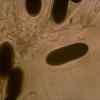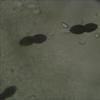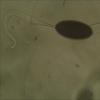
21-12-2025 09:32
Hello.A tiny ascomycete found embedded in wood in

22-12-2025 00:47
Patrice TANCHAUDBonsoir, récolte à proximité du milieu dunaire

21-12-2025 21:32
Pol DebaenstHello, Garden, Burgweg 19, Veurne, BelgiumOn 10/1

21-12-2025 21:40
Isabelle CharissouBonjour, j'aimerais connaitre les références de

21-12-2025 21:31
Pol DebaenstHello, Garden, Burgweg 19, Veurne, BelgiumOn 10/1

21-12-2025 21:31
Pol DebaenstHello, Garden, Burgweg 19, Veurne, BelgiumOn 10/1

20-12-2025 23:08
Patrice TANCHAUDBonsoir, récolte sur sol sablonneux dans l'arri�

20-12-2025 15:47
Mirek GrycHi.These grew on pine wood that was heavily covere
Appendages and sheaths
Jac Gelderblom,
23-08-2013 13:29
The keys of Shoemaker on Ophiobolus and Phaeosphaeria make use of "appendages" (Ophiobolus) and "sheaths" (Phaeosphaeria) for sporefeatures. I usually make my mounts in water and the I never see appendages nor sheaths. Should I use other reagentia to see them?
Who can give me advise in this matter?
Greetings
Jac Gelderblom
Francisco Calaça,
23-08-2013 13:53
Re : Appendages and sheaths
Hello Jac,
usually, only the direct mounting in water, it's difficult to see the pageants gelatinous ("appendages" and "sheaths"). I, usually, use some reagents that facilitate the visualization, cuz they're hyaline, microscopy common is really complicated. I use the congo red (works with Podospora species), is reasonably good. Another option is the indian ink. Sometimes lactophenol is good.
Stay fine,
Francisco Calaça.
usually, only the direct mounting in water, it's difficult to see the pageants gelatinous ("appendages" and "sheaths"). I, usually, use some reagents that facilitate the visualization, cuz they're hyaline, microscopy common is really complicated. I use the congo red (works with Podospora species), is reasonably good. Another option is the indian ink. Sometimes lactophenol is good.
Stay fine,
Francisco Calaça.
Yannick Mourgues,
23-08-2013 13:55

Re : Appendages and sheaths
To see gel sheaths, I use Indian Ink.
Y
Y
Joop van der Lee,
23-08-2013 19:31

Re : Appendages and sheaths
Most of the time appendages break off easily when spores are mature. When examening these species in water I do not use much pressure on the deck glass so it gives you the opportunity to look at young spores still in the ascus where appendages are still connected. When you are lucky you might also see them on mature spores but be carefull not to put too much pressure on the deck glass.





